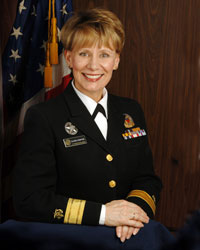
Dear Physical Activity Colleagues,
For thirty years, the Healthy People initiative has put forth a comprehensive set of health promotion and disease prevention objectives to track, monitor, and motivate action to improve the health of all people in the United States. As we prepare for the next decade, the Healthy People 2020 initiative aims to unify the national dialogue about health, motivate actions, and encourage new directions in health promotion, providing a public health roadmap and compass for the country. More than ever, the Healthy People vision of a society in which all people live long, healthy lives speaks to the challenges and opportunities we face each day, calling on us to improve population health by developing collaborative solutions that reach beyond health care.
It is with great excitement that the U.S. Department of Health and Human Services invites you to be a part of the launch of Healthy People 2020. The event will take place on December 2, 2010, from 11:00 AM to 1:00 PM EST at the Jack Morton Auditorium of The George Washington University, 805 21st Street NW, Washington, DC 20052.
This event will mark the beginning of Healthy People 2020 and the official release of the next decade’s national health promotion and disease prevention objectives. The program will include remarks from the HHS Assistant Secretary for Health Dr. Howard K. Koh and members of the Secretary’s Advisory Committee on National Health Promotion and Disease Prevention Objectives for 2020. There will be an introduction and orientation to the Healthy People 2020 Web site and objectives, followed by a panel discussion about the uses of Healthy People 2020. You can ask live questions via Webcast and Twitter.
You have played an important role in developing Healthy People 2020. Now the real work begins! Similar to the past two decades, Healthy People 2020 will include Physical Activity as a topic area. As a key stakeholder, your work to implement Healthy People 2020 Physical Activity objectives throughout the decade will be critical to improving the health of the nation. Please consider following Healthy People on Twitter at: www.twitter.com/gohealthypeople. Registration for the event is strongly encouraged. Live Web streaming will also be available. Any questions regarding the event can be sent to healthypeople2020@air.org. To attend the launch or participate via Web streaming, register by visiting www.healthypeople.gov/2020_reg/register.aspx
Please join us and be part of making Healthy People come alive for all Americans.
Sincerely,
RADM Penelope Slade-Sawyer, P.T., M.S.W.
Deputy Assistant Secretary for Health
(Disease Prevention and Health Promotion)
U.S. Department of Health and Human Services





